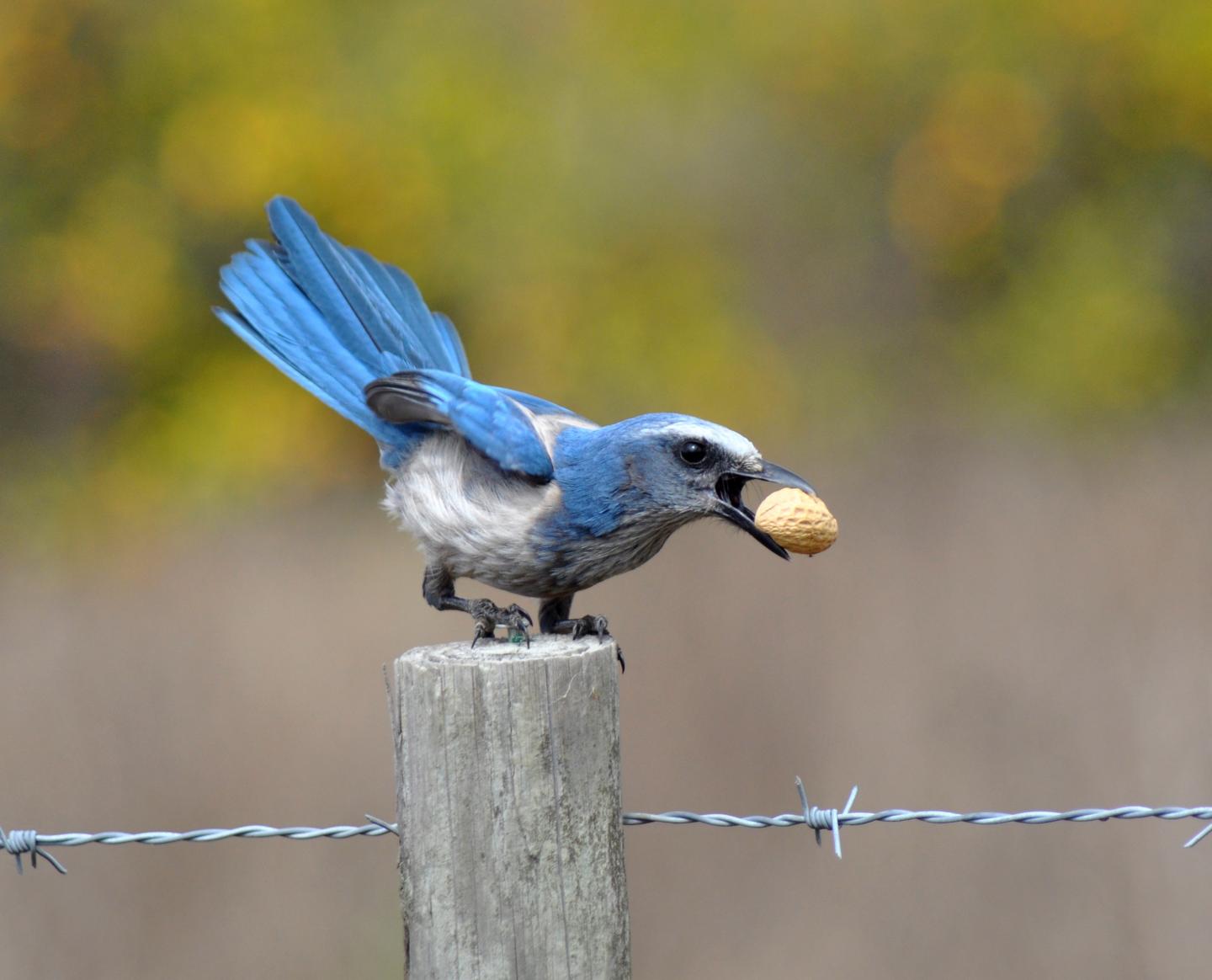
Credit: Louise E Hunt
Ithaca, NY-Legendary conservationist Aldo Leopold once advised: "To keep every cog and wheel is the first precaution of intelligent tinkering." For the Endangered Florida Scrub-Jay, new research shows that saving every last grouping among its small and scattered remnant populations is vital to preserving genetic diversity–and the long-term survival of the species.
There are just over 5,000 Florida Scrub-Jays left in the world, with four main populations in central Florida and dozens of smaller satellite populations. The study–published today in the journal Current Biology–shows that these small, peripheral populations are contributing to the overall health of the species, via immigrant birds that move to a new area and offer genetic diversity in mating.
"Conservation efforts are often focused solely on maintaining a few large populations. However, we found that our relatively large study population relies on immigrants from small peripheral populations to maintain genetic diversity," said Nancy Chen, study author and postdoctoral fellow at the University of California, Davis. Chen started the study during her graduate studies and postdoctoral research at Cornell University. "Our results are making us rethink conservation priorities in the future."
Chen and her collaborators, including Cornell Lab of Ornithology director John W. Fitzpatrick, studied the breeding and genetic mixing among a relatively stable population of Florida Scrub-Jays at the Archbold Biological Station in central Florida. Archbold is surrounded by a number of smaller satellite populations a few miles away. Those satellite populations have experienced a 50 percent decline in recent decades, rendering the small remnant groups subject to inbreeding, yet they are still providing a service to their species when one member immigrates to the larger Archbold population.
The team's analysis shows that on average, immigrant-resident pairs at Archbold share more of their genomes with each other compared to resident-resident Archbold pairs. In other words, offspring with an immigrant for a parent have a more diverse mix of genetic material than offspring of two residents, which are more likely to be inbred.
The study recorded that as the satellite populations declined from 1995 to 2013, instances of immigration into Archbold fell by about half. As the flow of new birds into the Archbold Florida Scrub-Jay population decreased, inbreeding at Archbold increased, with consequences for the offspring. The study showed higher rates of egg failures, lower nestling weight, and lower first-year survival among offspring whose parents are close relatives. Put simply, inbred Florida Scrub- Jay nestlings were far less likely to survive their first year.
This study project is one of the few to catalog and analyze the genetics of a single wildlife population through time. The Archbold Florida Scrub-Jay population has been exhaustively genotyped over several decades of research.
"Our study population of jays at Archbold is one of the largest and best-managed remaining populations of Florida Scrub-Jays," said Chen. "Our result that decreased immigration led to increased inbreeding over time, even at Archbold, emphasizes the importance of beginning active conservation efforts early.
"It's important to consider preserving small and even inbred populations as well, as they may play a vital role in preserving genetic diversity in larger and seemingly stable populations."
The Florida Scrub-Jay is the only bird found exclusively in Florida. It was added to the federal Endangered Species List in 1987, with a dwindling population down to less than 10 percent of its pre-settlement numbers. Loss of oak scrub habitat is the primary driver of the continued decline.
###
Media Contact
Pat Leonard
[email protected]
607-254-2137
@cornell
http://pressoffice.cornell.edu





